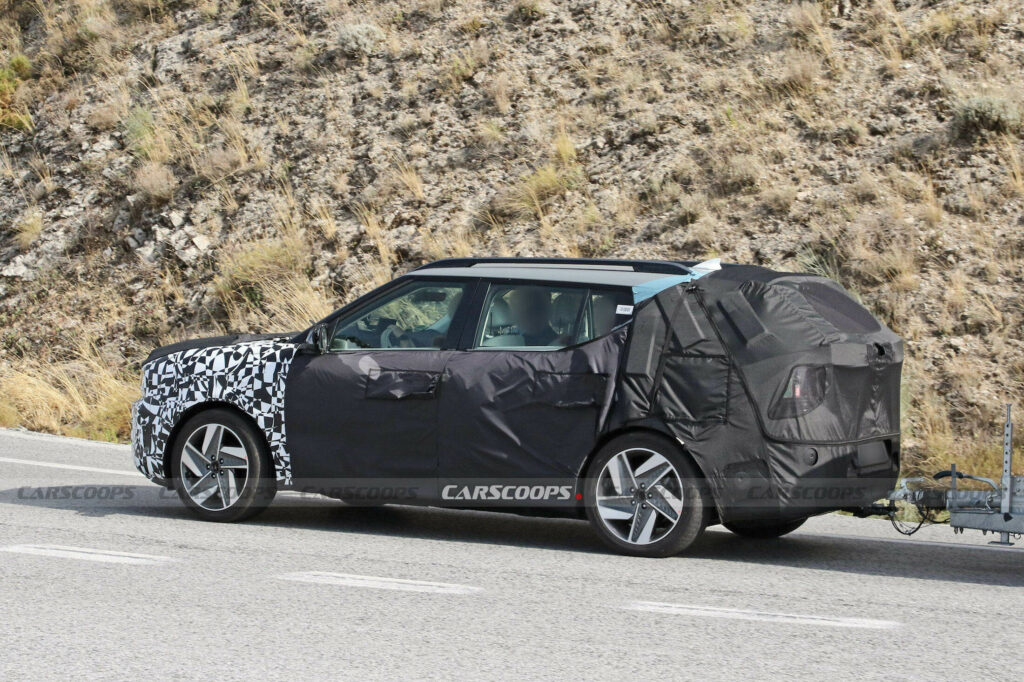- The second-generation Hyundai Nexo is set to launch in 2025 with a radically new look.
- This hydrogen SUV is expected to deliver nearly 500 miles of range and enhanced performance.
- It shares design elements with the latest Santa Fe while preserving its unique identity.
Earlier this month, BMW confirmed plans it would be putting a hydrogen vehicle on sale by 2028 with a little help from Toyota, but two years before that happens we’ll get this, Hyundai’s second-generation Nexo SUV.
Swapping some of the current Nexo’s curves for more fashionable, purposeful straight lines, the new version looks to have improved the SUV’s practical nature thanks to its slightly more upright tail. The boxy shape shows a family link to the new Santa Fe from the B-pillars forward, though the shorter wheelbase and distinctive kick in the Nexo’s waistline at the back of the rear door makes the two easy to tell apart.
Related: 2026 Hyundai Nexo Is Green Gassing Into A Fuel Cell Future
When the heavy disguise is peeled away next year in time for the 2026 model year we expect to see a full-width light bar across the nose. But judging from the position of the lights at the rear end on this prototype, the tail design is quite different from the one seen in earlier (unverified) sketches, which placed the taillights on either side of the window.
Hyundai hasn’t released any information about the new Nexo’s powertrain, but it’s logical to assume that it will be both more powerful and longer-legged than the current SUV. That makes just 161 hp (163 PS / 230 kW), together with 291 lb-ft (395 Nm), and has an EPA range of 380 miles (611 km). Some sources suggest the new Nexo will increase its range to 497 miles (800 km).

The original Nexo went on sale in the US in 2018, before arriving in the UK the following year, and Australia in 2021. But it’s a rare sight, American sales being limited to California, where availability of refuelling spots is better – though less great than it was after Shell closed multiple stations earlier this year.
At CES in Las Vegas in January Hyundai announced two approaches to hydrogen production, Waste-to-Hydrogen and Plastic-to-Hydrogen. The waste program involves converting food and livestock manure to biogas, which is then treated to capture hydrogen, while its sister scheme creates the gas by melting non-recyclable plastics.












